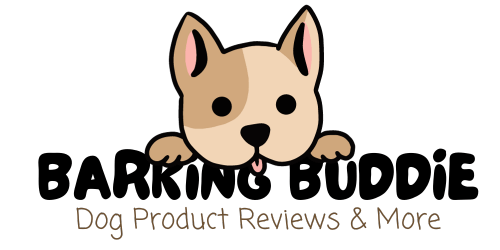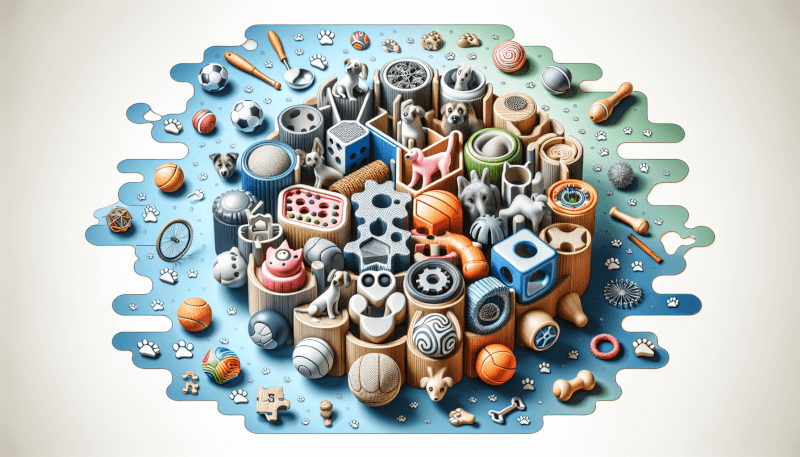Imagine living in a vibrant dog community where your furry friends have endless opportunities for fun, learning, and socializing. In this article, we will explore the exciting world of canine enrichment activities and discover how you can incorporate them into your dog community. From interactive games to sensory experiences, we will guide you through simple yet effective ways to enhance your canine companion’s physical and mental well-being while strengthening the bonds within your dog-loving community. So, get ready to unleash a world of enrichment possibilities and watch your four-legged friends thrive!
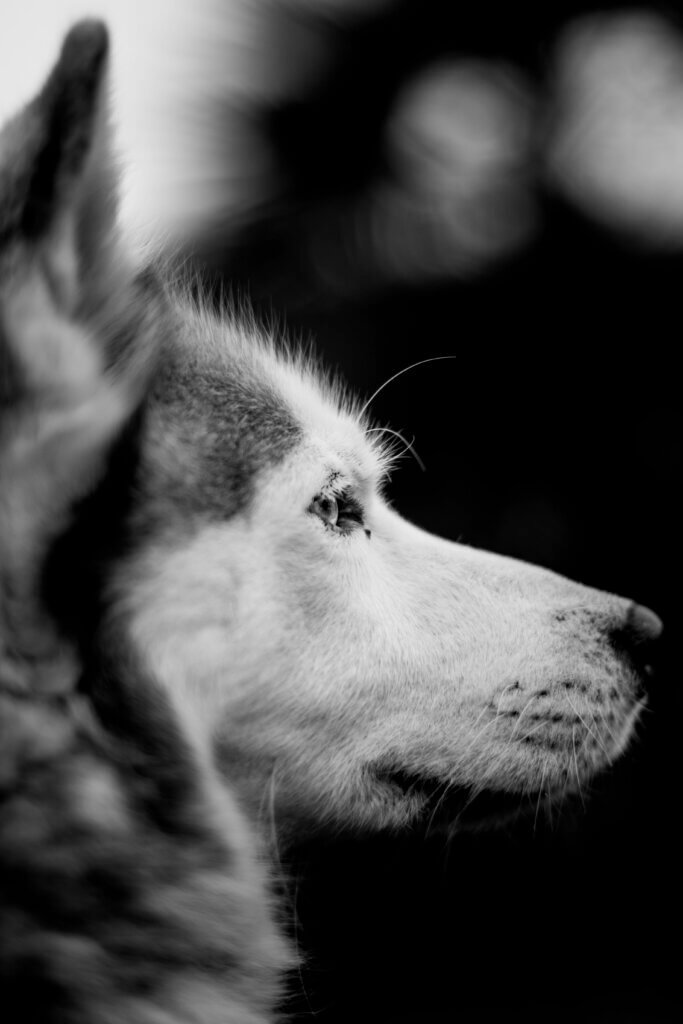
Creating a Dog Community
Establishing a dog park or community space
Creating a dog community starts with having a dedicated space where dogs and their owners can come together. Establishing a dog park or community space provides a safe and enclosed area for dogs to socialize and play freely. The park should be properly fenced to prevent any escapes and should have separate areas for small and large breeds. Additionally, it’s important to ensure that the park is well-maintained, with proper waste disposal facilities and regular cleaning to promote cleanliness and hygiene.
Building a sense of community among dog owners
In order to create a thriving dog community, it is essential to foster a sense of belonging among dog owners. This can be achieved by organizing social events or meet-ups where dog owners can come together, share experiences, and learn from one another. Encouraging communication and interaction among dog owners can help build lasting friendships and create a supportive network. Online platforms, such as social media groups or forums, can also be utilized to connect dog owners and facilitate community building.
Organizing regular meet-ups and events
Regular meet-ups and events are key to maintaining an active and engaged dog community. These gatherings offer opportunities for both dogs and their owners to socialize, learn, and have fun together. Organizing activities such as group walks, training workshops, or themed events can help keep the community lively and vibrant. It is important to create a diverse range of events that cater to different interests and needs, ensuring that every member of the community feels included and engaged.
Understanding Canine Enrichment
What is canine enrichment?
Canine enrichment refers to the activities and experiences that provide mental and physical stimulation to dogs. It is designed to satisfy their natural instincts, promote their overall well-being, and prevent behavioral issues that may arise due to boredom or lack of mental engagement. Enrichment activities can include puzzles, interactive toys, sensory experiences, training exercises, and physical challenges that require problem-solving.
Benefits of canine enrichment
Incorporating canine enrichment into a dog community brings a multitude of benefits. Firstly, it helps prevent boredom and destructive behavior in dogs, as they are provided with mental and physical outlets for their energy. Enrichment activities also aid in reducing anxiety and stress, promoting emotional well-being in dogs. Additionally, engaging in enrichment activities can enhance the bond between dogs and their owners, as it provides opportunities for shared experiences and positive reinforcement.
Types of enrichment activities
There are various types of enrichment activities that can be incorporated into a dog community. Sensory activities, such as scent games or obstacle courses, stimulate a dog’s senses and encourage exploration. Mental stimulation activities, such as puzzle toys or treat-dispensing games, challenge dogs to think and problem-solve. Physical exercise and agility activities, such as hiking or agility courses, keep dogs physically fit and active. Interactive toys and puzzles, such as Kong toys or snuffle mats, provide mental and physical stimulation while also allowing dogs to have fun and engage in solo play.
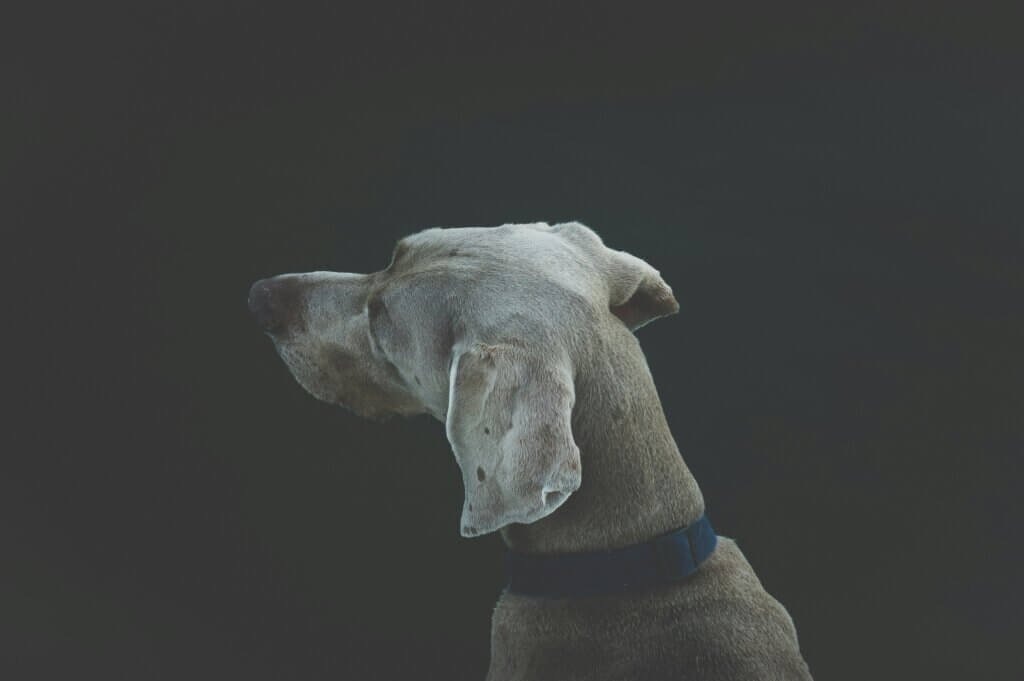
Incorporating Canine Enrichment Activities
Designating specific areas for enrichment
Creating designated areas within the dog community for enrichment activities can help ensure that dogs have a dedicated space for mental and physical stimulation. These areas can include agility courses, play structures, or puzzle stations, where dogs can engage in various enrichment activities. By clearly marking these spaces or stations, dog owners can easily identify and utilize them during their visits to the community area.
Providing a variety of sensory experiences
Sensory experiences are an important aspect of canine enrichment. By incorporating different smells, textures, and sounds into the dog community, dogs are exposed to a variety of stimuli that engage their senses and encourage exploration. This can be achieved by creating sensory gardens, with different plants and flowers that emit various scents, or by setting up sensory stations with different textured surfaces or materials for dogs to explore and interact with.
Implementing mental stimulation activities
Mental stimulation activities are crucial for keeping dogs mentally engaged and challenged. These activities can include puzzle toys, where dogs have to figure out how to obtain treats or rewards, or training exercises that require problem-solving skills. Implementing these activities in the dog community can be as simple as placing puzzle toys in designated areas or organizing group training sessions where dogs can learn and practice new skills.
Encouraging physical exercise and agility
Physical exercise and agility activities are not only important for a dog’s physical health but also provide mental stimulation. Designating specific areas for physical exercise, such as open fields or running tracks, gives dogs the freedom to run, chase, and play. Additionally, incorporating agility equipment, such as tunnels or hurdles, provides dogs with physical challenges that require coordination and problem-solving abilities. Organizing agility training sessions or obstacle course events can further engage dog owners and promote physical activity in the dog community.
Introducing interactive toys and puzzles
Interactive toys and puzzles are a great way to keep dogs mentally stimulated and entertained. These toys, such as treat-dispensing toys or puzzle balls, require dogs to manipulate and problem-solve in order to obtain their rewards. Introducing a variety of interactive toys and puzzles in the dog community can offer dogs a range of challenges and engage their curiosity. Having designated play areas where dogs can interact with these toys and puzzles encourages them to explore and experiment with different activities.
Engaging Dog Owners in Enrichment
Educating dog owners on the importance of enrichment
It is essential to educate dog owners on the importance of canine enrichment and its benefits. Many dog owners may not be aware of the importance of mental and physical stimulation for their pets. Providing educational resources, such as pamphlets or online articles, can help dog owners understand the positive impact that enrichment activities can have on their dogs’ well-being. Additionally, sharing success stories or testimonials from other dog owners within the community can further emphasize the importance of incorporating enrichment activities into their daily routines.
Organizing workshops and training sessions
Organizing workshops and training sessions focused on canine enrichment can be an effective way to engage dog owners and provide them with the necessary knowledge and skills to incorporate enrichment activities into their dogs’ lives. These sessions can cover a range of topics, such as how to choose appropriate toys and puzzles, how to properly use interactive toys, or how to design mental stimulation activities. By offering hands-on training and guidance, dog owners can feel more confident in their ability to provide enrichment for their pets.
Providing resources and recommendations on enrichment activities
To further support dog owners in incorporating enrichment activities, it is important to provide them with resources and recommendations. This can include curated lists of interactive toys and puzzles, step-by-step guides for training exercises, or recommendations for local trainers or organizations that specialize in enrichment. By making these resources readily available, dog owners can easily access information and find inspiration for new enrichment activities to try with their furry friends.

Creating an Enrichment Schedule
Planning a weekly schedule for different activities
Creating a weekly schedule for enrichment activities helps ensure that a variety of activities are offered consistently. Planning different activities for each day of the week can keep both dogs and dog owners engaged and excited about participating. For example, Mondays can be dedicated to obedience training, Tuesdays for sensory experiences, Wednesdays for agility courses, and so on. By having a structured schedule, dog owners can plan their visits to the dog community accordingly and look forward to the specific activities each day.
Rotating enrichment options to prevent monotony
To prevent dogs from becoming bored or disinterested in the enrichment activities, it is important to rotate the options regularly. Introducing new toys, puzzles, or challenges every few weeks keeps the activities fresh and exciting. By providing a variety of enrichment options, dog owners can experiment and find what engages their dogs the most. Additionally, incorporating themed weeks or months, such as “puzzle month” or “scent games week,” can add an element of novelty and keep the community members curious and motivated.
Making adjustments based on feedback and preferences
Listening to the feedback and preferences of dog owners is crucial in creating an enriching experience for both dogs and their owners. Regularly soliciting feedback through surveys, suggestion boxes, or online forums allows dog owners to express their opinions and provide input on the enrichment activities. Taking into consideration the feedback received, adjustments can be made to the schedule or activities to better meet the needs and interests of the community. This continuous feedback loop ensures that the enrichment program remains dynamic and responsive to the evolving needs of the dog community.
Promoting Safety and Health
Ensuring the dog community is clean and hygienic
Maintaining cleanliness and hygiene within the dog community is essential to promote the health and well-being of both dogs and humans. Regular cleaning and proper waste disposal facilities should be provided to prevent the accumulation of waste or the spread of diseases. Dog owners should be encouraged to clean up after their pets and dispose of waste in designated areas. Additionally, providing hand sanitizing stations and promoting good hygiene practices among dog owners can help prevent the transmission of germs or parasites.
Monitoring interactions between dogs during enrichment activities
While fostering socialization and interaction between dogs is important, it is equally important to ensure that these interactions remain safe and respectful. Monitoring the behavior of dogs during enrichment activities and intervening when necessary helps prevent any potentially harmful situations. Dog owners should be educated on how to recognize signs of aggression or discomfort in their pets and encouraged to intervene if needed. Enforcing responsible dog ownership, such as leashing dogs when necessary or separating dogs when conflicts arise, helps create a safe environment for all members of the dog community.
Addressing any potential health or safety concerns
Addressing and promptly resolving any potential health or safety concerns is vital in maintaining a thriving and safe dog community. Regular inspections of the dog community space should be conducted to identify any hazards or maintenance issues. Access to veterinary care or first aid resources should be provided in case of emergencies. Furthermore, implementing guidelines or rules, such as vaccination requirements or behavior expectations, promotes the safety and well-being of all dogs in the community.
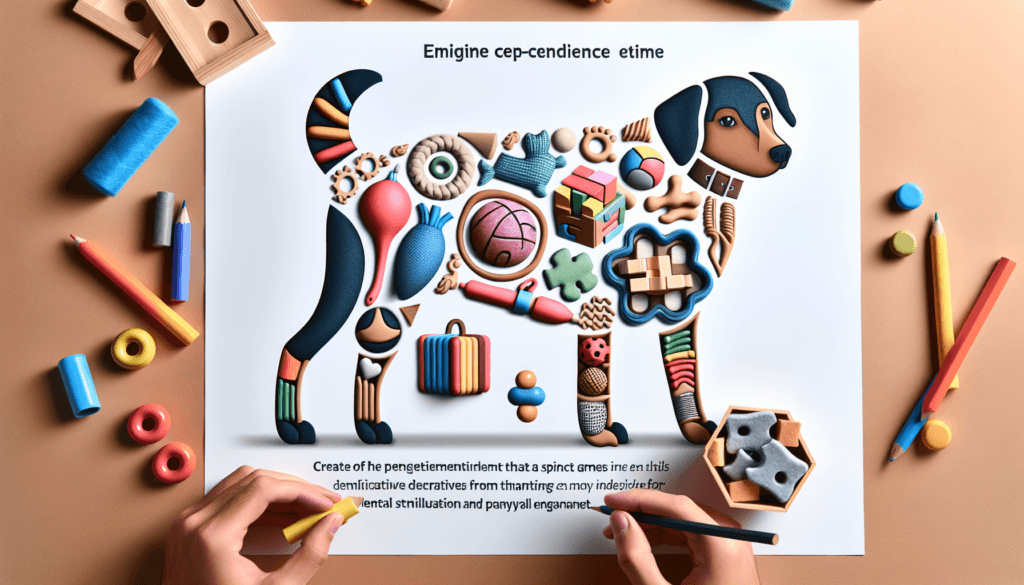
Incorporating Canine Enrichment in Training
Using enrichment activities as rewards during training sessions
Incorporating enrichment activities as rewards during training sessions can make the training experience more engaging and enjoyable for dogs. Instead of relying solely on treats, incorporating puzzle toys or interactive toys as rewards can provide mental stimulation and reduce reliance on food rewards. For example, after completing a training exercise successfully, a dog can be rewarded with a puzzle toy filled with treats. This encourages dogs to stay focused and motivated during training sessions, as they anticipate the reward of engaging in an enrichment activity.
Combining training and enrichment exercises
Combining training exercises with enrichment activities can maximize the benefits for both dogs and their owners. For example, incorporating obedience commands into agility courses or obstacle courses can enhance a dog’s obedience skills while providing physical exercise. By integrating obedience training and enrichment exercises, dog owners can reinforce good behavior and skills in a fun and engaging manner. This approach ensures that training sessions are not only about learning commands but also about stimulating the dog’s mind and body.
Integrating enrichment into obedience and agility training
Enrichment activities can be seamlessly integrated into traditional obedience and agility training sessions. For example, incorporating puzzle toys or scent games into obedience training helps reinforce commands while engaging the dog’s mind. Similarly, using agility equipment or obstacle courses during agility training provides mental and physical challenges in addition to honing coordination and agility skills. By integrating enrichment into training sessions, dog owners can make the most of their training time and provide a holistic learning experience for their dogs.
Collaborating with Local Businesses
Partnering with pet stores or suppliers
Collaborating with local pet stores or suppliers can be mutually beneficial for the dog community and the businesses involved. Local pet stores often have a variety of enrichment toys, puzzles, and supplies that dog owners might find useful. By partnering with these businesses, dog communities can gain access to a wider range of resources and products. Pet stores can also provide educational materials or host workshops on enrichment activities, further supporting the dog community in their efforts to incorporate enrichment into their dogs’ lives.
Organizing fundraising events for canine enrichment
Organizing fundraising events specifically aimed at supporting canine enrichment is a great way to generate resources for the dog community. These events can range from fun runs or dog walks to dog shows or themed parties. By involving the local community and dog owners, fundraising events can not only raise funds but also raise awareness about the importance of enrichment and the positive impact it can have on dogs’ lives. The funds raised can be used to purchase enrichment toys, maintain the community space, or support educational initiatives.
Seeking sponsorships or donations for enrichment resources
Seeking sponsorships or donations from local businesses, organizations, or individuals can provide additional resources for the dog community’s enrichment efforts. Businesses that align with the values and goals of the dog community, such as veterinary clinics or pet food suppliers, may be willing to sponsor specific enrichment activities or donate supplies. By reaching out to the local community and fostering relationships with potential sponsors or donors, the dog community can expand their enrichment program and provide even more opportunities for dogs to thrive.
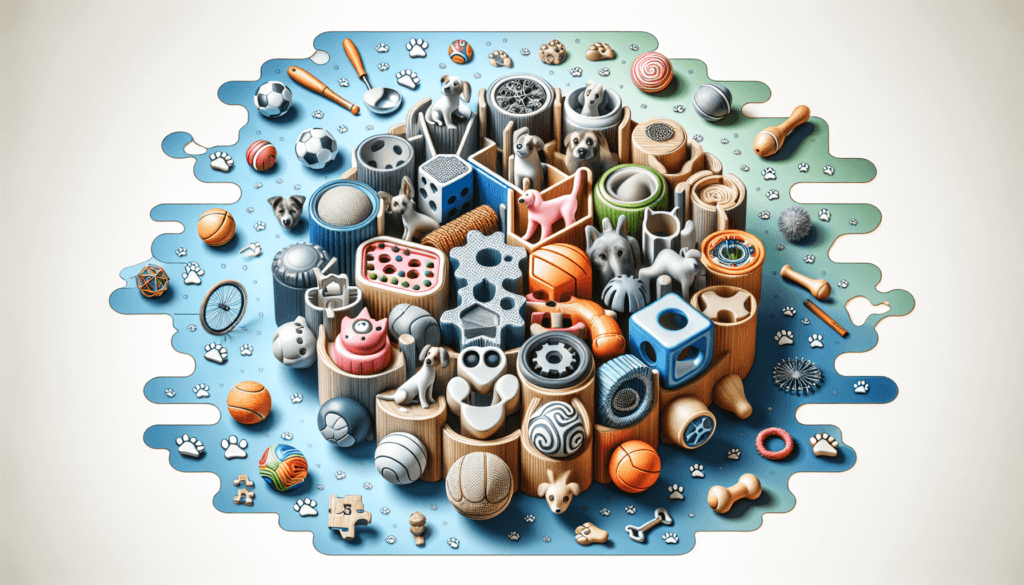
Evaluating the Success of Canine Enrichment
Collecting feedback from dog owners
Regularly collecting feedback from dog owners is crucial in evaluating the success of the canine enrichment program. Surveys or questionnaires can be distributed to gather insights and opinions on the activities and resources provided. Feedback can also be obtained through in-person discussions or online forums. By understanding the experiences and perspectives of the dog owners, adjustments can be made to improve the enrichment program and better meet the needs of the community.
Monitoring changes in behavior and overall well-being
A key indicator of the success of canine enrichment activities is the changes observed in dogs’ behavior and overall well-being. Monitoring and documenting any positive changes in behavior, such as increased engagement, reduced anxiety, or improved obedience, can provide objective evidence of the effectiveness of the enrichment program. Additionally, assessing the overall well-being of the dogs, such as their physical health and emotional state, can indicate the impact of enrichment on their quality of life.
Continuously improving and expanding enrichment options
The evaluation process should not end with feedback and observations but should be used as a basis for continuous improvement and expansion of enrichment options. By analyzing the feedback received, identifying areas for improvement, and addressing any shortcomings, the canine enrichment program can evolve and grow. The program can be enhanced by introducing new activities, offering additional resources, or exploring innovative ideas to engage and enrich the dog community further.
Conclusion
Creating a dog community that incorporates canine enrichment activities is a rewarding endeavor that brings many benefits to both dogs and their owners. By establishing a dedicated space, promoting community building, and organizing regular meet-ups and events, the foundation for a thriving dog community is laid. With an understanding of the importance of enrichment, dog owners can be educated and encouraged to incorporate various enrichment activities into their daily routines. By providing designated areas, a variety of sensory experiences, mental stimulation activities, physical exercise opportunities, interactive toys, and puzzles, the dog community can ensure that dogs receive the mental and physical stimulation they need. Engaging dog owners in enrichment through education, workshops, and resources helps promote continued involvement and commitment to their dogs’ well-being. Creating an enrichment schedule, promoting safety and health, incorporating enrichment into training, collaborating with local businesses, and continuously evaluating the success of enrichment efforts are key elements in fostering a vibrant and thriving dog community. With dedication, collaboration, and a focus on the well-being of dogs, a successful dog community that embraces canine enrichment can be created.
